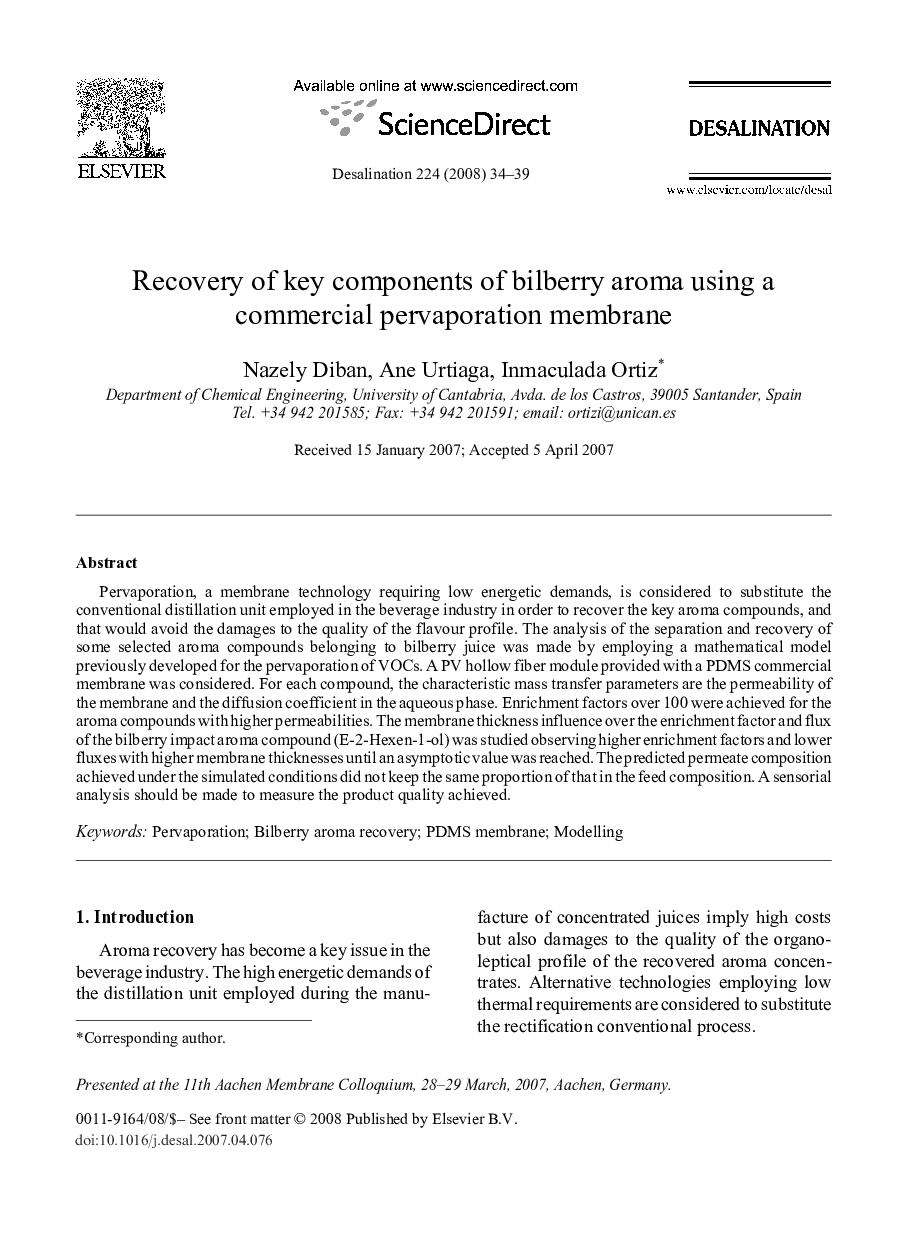| Article ID | Journal | Published Year | Pages | File Type |
|---|---|---|---|---|
| 627732 | Desalination | 2008 | 6 Pages |
Pervaporation, a membrane technology requiring low energetic demands, is considered to substitute the conventional distillation unit employed in the beverage industry in order to recover the key aroma compounds, and that would avoid the damages to the quality of the flavour profile. The analysis of the separation and recovery of some selected aroma compounds belonging to bilberry juice was made by employing a mathematical model previously developed for the pervaporation of VOCs. A PV hollow fiber module provided with a PDMS commercial membrane was considered. For each compound, the characteristic mass transfer parameters are the permeability of the membrane and the diffusion coefficient in the aqueous phase. Enrichment factors over 100 were achieved for the aroma compounds with higher permeabilities. The membrane thickness influence over the enrichment factor and flux of the bilberry impact aroma compound (E-2-Hexen-1-ol) was studied observing higher enrichment factors and lower fluxes with higher membrane thicknesses until an asymptotic value was reached. The predicted permeate composition achieved under the simulated conditions did not keep the same proportion of that in the feed composition. A sensorial analysis should be made to measure the product quality achieved.
